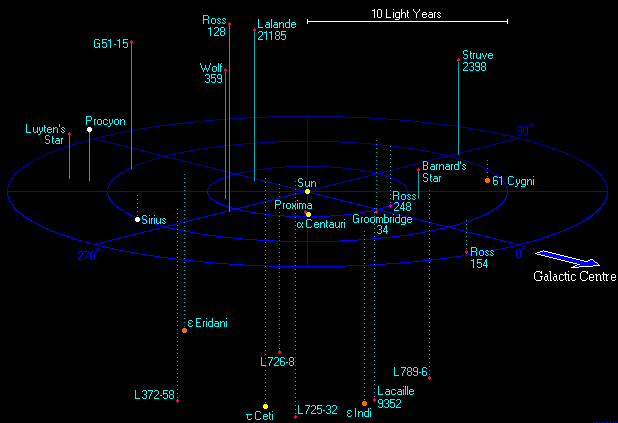1. the path to the planet on which intelligent life is possible about 5 million light years.
2.according to modern classical physics of Einstein
- the speed of light is limited and the time depends on the speed of movement
- a "hole in space" is theoretically possible, but time depends on speed and gravity
3 ... Imagine
Someone creates a hole in space
astronauts jump into this hole and get to the planet instantly .. But the planet is 5 million light years away.
They smoke cigarettes for 3 minutes and immediately return to Earth.
============
How long will it take?
1. For astronauts 3 minutes
2. For the inhabitants of the Earth = 5 million years + 5 million years + 3 minutes
about 10 million years.
=======
now let's imagine that aliens want to conquer the Earth, they are located 5 million light years from Earth ...
their troops will return to their planet in 10 million years. Their civilization will disappear.
aliens don't exist
You must be using "New Math" of some mysterious sort.
You state the astronauts travel "instantly" through the "hole" (wormhole?) and only spend 3(three) minutes on that planet. If this is so, then they are only gone for three minutes plus whatever microfraction of second(s) is takes to travel there and "immediately" return to Earth.
They are not gone 10+ million years.
I understand how many laypersons get confused by the concept of "light year" as it is both a distance and a speed with regard to how it is used. In the example of your OP here, that star of the planet visited is 5 million Light years away and the light from it took five million years to reach here. For reference;
...
The
light-year, alternatively spelled
lightyear, is a
unit of length used to express
astronomical distances and is equivalent to about 9.46
trillion kilometers (9.46×1012
km) or 5.88 trillion
miles (5.88×1012
mi).
[note 1] As defined by the
International Astronomical Union (IAU), a light-year is the distance that
light travels in vacuum in one
Julian year (365.25 days).
[2] Because it includes the word "
year", the term light-year is sometimes misinterpreted as a
unit of time.
[3]
The light-year is most often used when expressing distances to stars and other distances on a
galactic scale, especially in
non-specialist contexts and
popular science publications.
[3] The unit most commonly used in professional astronomy is the
parsec (symbol: pc, about 3.26 light-years) which derives from
astrometry: it is the distance at which one
astronomical unit subtends an angle of one
second of arc.
[2]
...

en.wikipedia.org
~~~~~~~~~~~~~~~~~
Now, for further reference, our galaxy - Milky Way - is about 100,000 lightyears in diameter;
...
Our Sun (a
star) and all the planets around it are part of a galaxy known as the Milky Way Galaxy. A galaxy is a large group of stars, gas, and
dust bound together by
gravity. They come in a variety of shapes and sizes. The Milky Way is a large barred spiral galaxy. All the stars we see in the night sky are in our own Milky Way Galaxy. Our galaxy is called the Milky Way because it appears as a milky band of light in the sky when you see it in a really dark area.
It is very difficult to count the number of stars in the Milky Way from our position inside the galaxy. Our best estimates tell us that the Milky Way is made up of approximately 100 billion stars. These stars form a large
disk whose diameter is about 100,000
light years. Our Solar System is about 25,000 light years away from the center of our galaxy – we live in the suburbs of our galaxy. Just as the Earth goes around the Sun, the Sun goes around the center of the Milky Way. It takes 250 million years for our Sun and the solar system to go all the way around the center of the Milky Way.
...
This site is intended for students age 14 and up, and for anyone interested in learning about our universe.

imagine.gsfc.nasa.gov
~~~~~~~~~~~~~~~~~
Your example of a planet 5 million light years away is one who's star is in another galaxy also about five million lightyears away. It's more probable to consider visiting one of the exoplanets to a star closer to home, in our own galaxy, which is less distant;
...
An
exoplanet or
extrasolar planet is a
planet outside the
Solar System. The first possible evidence of an exoplanet was noted in 1917, but was not recognized as such.
[4] The first confirmation of detection occurred in 1992. This was followed by the confirmation of a different planet, originally detected in 1988. As of 1 August 2021, there are 4,801 confirmed exoplanets in 3,552
planetary systems, with 789 systems
having more than one planet.
[5]
...

en.wikipedia.org
~~~~~~~~~~~~~~~~~~~~~
These exoplanets are within our Milky Way galaxy and some might host life in one form or another. They also are the more probable to explore since they are relatively close by us.
List of potentially habitable exoplanets

en.wikipedia.org
~~~~~~~~~~~~~~~~~~~
Another challenge with such distant travel, whether it be a few lightyears away, or thousands, or millions, is that we are seeing light from that distant star showing where it was that many years ago. In your example, where that star, and planet, were 5 million years ago. The real challenge/problem is "where is that star and planet now?". Likely they will have moved a bit relative to our view/perspective here at Sol/Earth, so how to accurately aim that "hole" to where you want your astronauts to go ???
~~~~~~~~~~~~~~~
Final point of this post is that the bulk of material in your opening post(OP) has nothing to do with the case for, or against, the existence of "alien life", i.e. life on other worlds/planets. You have neither proven nor dis proven the existence of such.
FWIW, more essential questions would be if there is life on exoplanets; have they developed intelligence, civilization, and star-faring(travel) capability?
And if so ...
Have extraterrestrial (ET) life been here, perhaps in distant past?
Might ET Life be here now?
You have however displayed the shortcomings of your grasp on basic sciences and basic mathematics, which in turn places the extent and competency of your schooling and education in question and possible low regard.





